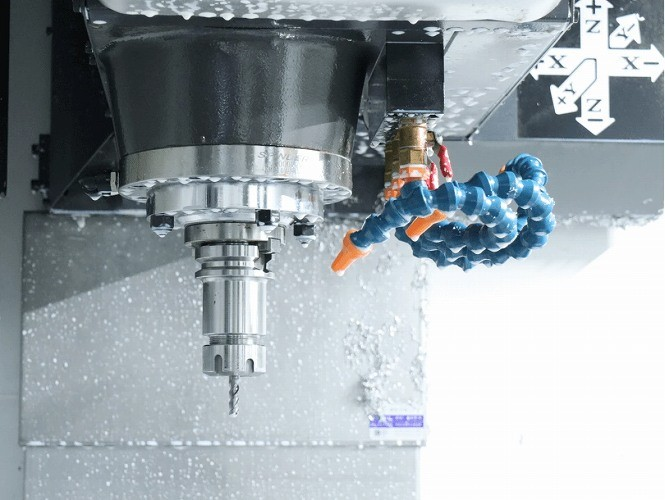Why Invest Water-Efficient Toilets in Large Facilities
In today’s business landscape, operational efficiency and cost-saving strategies are crucial for facility managers across various sectors. From shopping centers to hotels and office complexes, large facilities continuously look for ways to reduce expenses without compromising quality or customer satisfaction.
One impactful yet often overlooked way to cut costs is by investing in water-efficient toilets. These fixtures offer both environmental benefits and significant cost savings, lowering water bills and reducing maintenance expenses, which leads to substantial long-term savings for facility operators.
Understanding Water-Efficient Toilets: A Quick Overview
A water-efficient toilet is designed to use significantly less water per flush than traditional models. Conventional toilets can use up to 3.5 gallons per flush (GPF), whereas modern high-efficiency toilets (HETs) typically use only 1.28 GPF or less.
Technologies like water-efficient toilet bowls with dual flush options allow users to choose between a full flush or a partial flush, depending on the type of waste. This feature optimizes water use in high-traffic areas.
Such features, combined with water-conserving toilet designs, help ensure that facilities achieve maximum efficiency without compromising functionality.
Major Cost-Saving Benefits of Water-Efficient Toilets
1. Lower Water Bills and Increased Operational Savings
One of the most immediate and measurable benefits of installing water-efficient toilets in large facilities is a reduction in water bills. In high-traffic areas, toilets are used numerous times daily, leading to extensive water use.
In hotels, shopping centers, and office complexes, this usage quickly adds up, making up a significant portion of utility bills. For example, in a hotel with hundreds of guests daily, switching from a traditional model to a high-efficiency toilet can save thousands of gallons of water per year.
Likewise, in a busy shopping center, installing water-conserving toilets can lower annual water consumption by tens of thousands of gallons, translating to substantial savings as water rates rise in many regions.
2. Decreased Maintenance and Plumbing Costs
Another advantage of water-efficient toilets is that they are designed to minimize wear and tear, leading to fewer maintenance and repair needs. Older, high-flow toilet models often suffer from issues such as clogs, leaks, and mechanical malfunctions, resulting in costly repairs and disruptions to daily operations.
Water-saving toilets, particularly high-efficiency toilet models with advanced flushing technologies, are less prone to clogging and typically come with durable components. This helps reduce the need for frequent repairs.
Dual-flush options, for instance, offer a smaller flush that reduces water waste and minimizes the strain on plumbing systems. This efficient use of water flow helps prevent clogs and backups, decreasing the likelihood of emergency plumbing repairs and associated costs.
For large facilities with multiple restrooms, these savings in maintenance and repair work can add up significantly over time, making water-efficient toilets a smart investment for operational efficiency.
3. Enhanced Sustainability and Green Building Certifications
For facilities aiming to meet sustainability goals, water-efficient toilets are a cornerstone of any green initiative. Reducing water usage not only contributes to environmental responsibility but also supports industry benchmarks in green building standards.
For large corporate buildings, hotels, and shopping centers, incorporating water-conserving toilets can help achieve sustainability benchmarks, which is valuable for facilities that prioritize corporate social responsibility (CSR).
Moreover, water-efficient toilet options help facilities pursue green building certifications such as LEED (Leadership in Energy and Environmental Design). Green certifications can enhance a facility’s value and appeal, as many tenants and customers are drawn to environmentally responsible properties.
Additionally, some regions offer tax incentives or rebates for water-conserving toilet installations, providing further financial savings and making these upgrades even more attractive.
Key Considerations When Choosing Water-Efficient Toilets for Large Facilities
1. Opt for Reliable Brands and Models
Not all water-efficient toilets are created equal. High-traffic facilities should prioritize models known for durability and reliable performance.
High-quality water-efficient toilet bowls and flushing mechanisms that meet both water efficiency and performance standards can reduce the risk of plumbing issues in the long term. When selecting products, it’s wise to explore good toilet bowl brands to ensure durability and functionality for high-traffic commercial settings.
2. Prioritize WaterSense-Certified Models
WaterSense-certified toilets meet rigorous standards for water efficiency and performance. Facilities choosing water-efficient toilets with this certification can be confident they are installing products that conserve water without sacrificing flushing performance, thus reducing the risk of any compromise on utility.
3. Calculate Long-Term Savings with Accurate Water Usage Data
To justify the investment in water-efficient toilets, facilities should conduct a thorough cost-benefit analysis. By calculating current water usage and comparing it with estimated reductions, managers can quantify long-term savings and determine the ROI on water-efficient upgrades.
Many utilities provide water calculators or tools to estimate savings from low-flow and high-efficiency toilet fixtures, aiding in this decision-making process.
Case Example: Water-Efficient Toilets in Office Complexes
Consider a corporate office complex with over a thousand employees. The facility manager decides to replace all traditional toilets with water-efficient toilet bowls.
Initially, the upfront cost may seem significant, but after a year, the complex’s water bills have decreased by 20%, and instances of clogged toilets and plumbing issues have drastically declined. The savings on water bills alone start offsetting the installation costs, while reduced maintenance needs improve operational efficiency and tenant satisfaction.
Such cases highlight the tangible benefits water-efficient toilets offer for large facilities.
Final Thoughts: A Smart Investment for Cost-Conscious Facilities
Water-efficient toilets are not just environmentally friendly fixtures; they are strategic investments that reduce operational costs in multiple ways. From lower water bills to decreased maintenance needs and enhanced sustainability, the advantages are clear and compelling.
As more large facilities recognize these savings, water-efficient toilets and water-conserving toilet models are becoming essential features in commercial restrooms across industries.
For facility managers in large establishments, investing in water-efficient toilets presents a win-win solution. Not only does it contribute to a sustainable future, but it also leads to consistent financial savings that can be reinvested into other facility upgrades, enhancing the overall experience for tenants, customers, and employees alike.
Keep an eye for more news & updates on Verified Zine!





